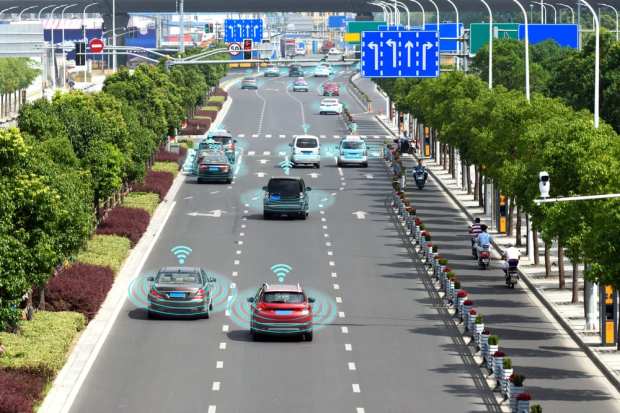Food Helps Drive Retail Aspects of Connected Vehicles

The connected vehicle ecosystem is taking shape, and that is bring new opportunities to retail. But challenges remains, not the least of which include securing the emerging ecosystem for those connected cards and trucks.
Among the latest developments from the retail side of the ecosystem comes from the world of QSRs.
Cars and quick-service restaurants (QSRs) have been interconnected since drive-ins were the latest innovation. QSRs thrive on speed and convenience, and that once meant catering to customers in cars via drive-thru windows.
QSR Innovation
Now cars have transformed from vehicle to ordering platform, and QSRs have been on the forefront of this transformation.
Consumers increasingly rely on mobile for ordering food, and in-car connected services are making this behavior even easier. According to the PYMNTS Commerce Connected Playbook, mobile usage in-car is already common, especially at QSRs: One quarter (25 percent) of drivers are already on their phones when pulling into drive-thru lanes. And ordering food while driving is one of the most common connected activities per PYMNTS’ Digital Drive report. More than one-third (35.3 percent) of commuters had ordered food and picked it up at a drive-thru in the past week, while a slightly lower number (33.4 percent) had ordered and picked up coffee the same way.
Most commuters in the Digital Drive report used voice assistants provided by the auto manufacturer (64.9 percent). Accessing Amazon’s Alexa (13 percent) and Google Assistant (12 percent) through the dashboard were far less popular. But in-dash Google Assistant had a good deal of future interest: 31.9 percent said they would engage in commuter commerce if this option was available.
Just a few months ago, Domino’s announced a partnership with Xevo to launch a pizza-ordering platform via dashboard touchscreen that will be preloaded in cars this year. Domino’s had already enabled in-car ordering with Ford’s Sync AppLink back in 2014.
Pizza chains are often early adopters, partly because consumers are accustomed to ordering pizza by phone instead of while physically at a store. In fact, Pizza Hut’s claim to fame is that it sold its first online order way back in 1994.
Commerce Wave
This is just the beginning of a new wave in digital commerce; 64 million shipments of connected cars are forecast for 2019, up from 33 million in 2017. By 2020, nearly all (98 percent) new cars will offer internet and cellular and wireless connectivity.
Security, though, remains an issue for connected vehicles. Indeed, in a new survey, 61 percent of consumers indicated they were not aware that hackers could potentially gain control of a connected vehicle — an issue of perception that could come into play during a data breach. “The research also found that 65 percent of connected vehicle owners believed — incorrectly — that vehicle manufacturers must inform owners of software and security updates,” according to the report from Auto Remarketing.
“The study also showed that the younger the survey participant, the lower his or her perception of the security threat of connected vehicles. Fifty four percent of 18- to 29-year-olds saw connected cars as a minimal threat, compared to 42 percent of all respondents,” according to that publication.
Making consumers feel secure in their connected vehicles will have significant impacts for the retail opportunity — so will making sure those cars and truck offer seamless payment experiences.
As use of the connected car grows, these upgraded vehicles have the potential to serve 135 million commuters who spend an average of 51 minutes driving to and from work every day. After all, PYMNTS research shows that most commuters are interested in using their daily commute times to handle a host of tasks, such as taking phone calls, ordering groceries, paying bills and making other retail purchases — all from their cars’ connected dashboards.
